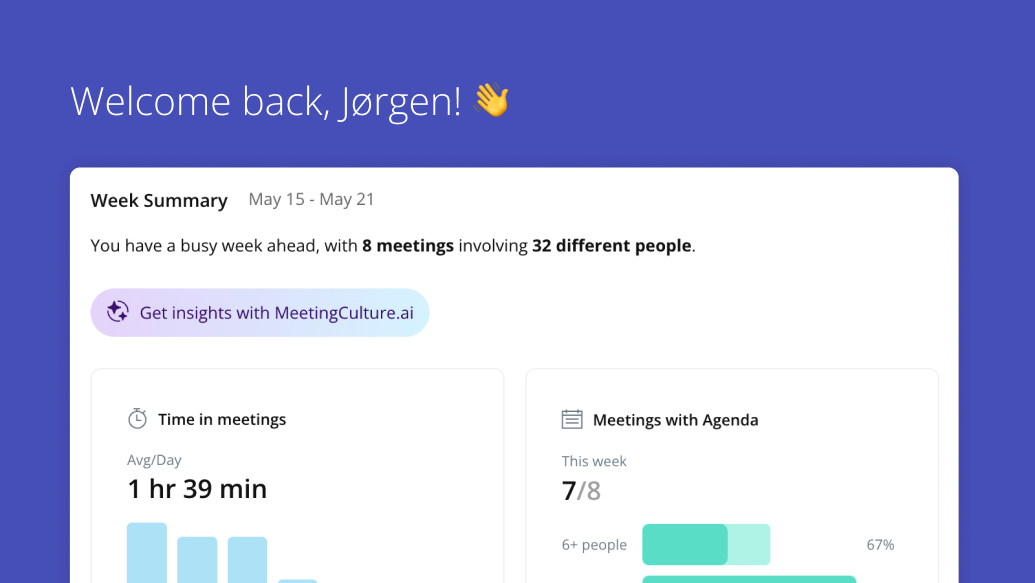Create a healthy meeting culture with these three steps
The Department of Organizational Science at UNC Charlotte identified three key themes meeting leaders can implement to promote a healthy meeting culture.
In an earlier post, we shared five easy-to-implement tactics for more effective virtual meetings as identified by the Department of Organizational Science at the University of North Carolina, Charlotte (UNCC). In this post, we will focus on three key themes the researchers identified that help create and promote a lasting healthy meeting culture.
I. Set expectations and norms
Setting meeting norms creates a culture of effective virtual meetings. The UNCC researchers provide the example that, for instance, a leader might instruct attendees to use the hand raise function or post questions to the chat-box when they are ready to engage. By establishing expectations at the start, there will be a shared understanding for how to best participate in meetings and communicate in ways that are most productive.
“Our customers find that formalizing the process for engaging in the meeting is especially critical for larger meetings with many participants,” said Jorgen Solberg, CEO of Decisions. “However, expectation-setting applies to every stage of the meeting – from how people prepare to participation to managing tasks and outcomes. It is important for leaders to identify the opportunities and solutions for productive meetings based on the specific meeting type and who is attending, and then lead by example.”
II. Create work boundaries
Working remotely naturally blurs the line between work and leisure time. With many of the elements needed to do our job at our fingertips (e.g., laptops, Smartphones), it can be a challenge to separate the two spheres of our lives. Our work email icon is only one click away from our Facebook app. According to the UNCC research report, “Virtual meetings play a sizeable role in this, as survey respondents reported over one third of their virtual one-on-one meetings are impromptu.” So, how do we prevent our bosses from calling us at the 5’o-clock hour?
While there are certainly instances when impromptu meetings are necessary, leaders can establish boundaries around non-essential meetings to give employees greater predictability over their day. The research suggests leaders try implementing an organizational or team policy of ‘No Meeting Fridays,' where Fridays are dedicated to individual tasks or projects. Leaders could also encourage calendar blocking, where employees block time on their calendar where no meetings can be scheduled. Leaders could make an effort to clarify that employees are not expected to attend meetings or respond to emails outside of their workday window, say 8:00 AM to 5:00 PM. Creating and adhering to these boundaries helps separate work and life, creating more structure for both employees and leaders.
III. Encourage consistent feedback
When it comes to leading great virtual meetings, there is no one-size-fits-all approach. The study found that respondents’ preferences in this area differed significantly. The key is this: Good meeting leaders ask for and implement feedback from their team. Leaders must adapt based on the goal of each meeting, while also keeping attendees’ preferences in mind. “Asking for feedback is as simple as sending out an anonymous poll or three-item survey to meeting attendees that asks what went well, where they can improve, and seeking suggestions for future meetings,” said the UNCC researchers.
“A day filled with meetings can be a challenge under normal circumstances. When layered with the global pandemic, we have found “virtual meeting fatigue” is a genuine issue facing employees,” said lead author of the report, Liana Kreamer. “It is critical for leaders to build an approach to meetings that both ensures important discussions are had and decisions are made, while also showing consideration for the participant experience across all the meetings they have.”
By pairing the tips for leading more effective virtual meetings from our previous post with the three themes for improving virtual meeting culture from above, meeting leaders will be able to create more positive and productive meeting experiences for themselves and their team.
Download the research report (opens as a PDF)
Build a Culture of Effective Meetings
Decisions is a meeting solution for Microsoft Teams and Office 365 that brings structure, organization and efficiency to every stage of the meeting process to improve outcomes and accelerate decision-making.



